During the Romanesque period Italy lacked national unity. The struggles between the major parties fighting for the government: the Ghibellines (loyal to German emperors) and the Welf (loyal to the ecclesiastical power), divided the cities into factions and confronted provinces one against the other. But this rivalry facilitated the production of artworks.
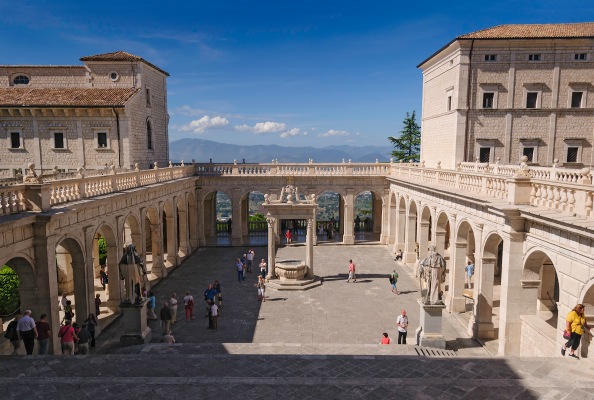
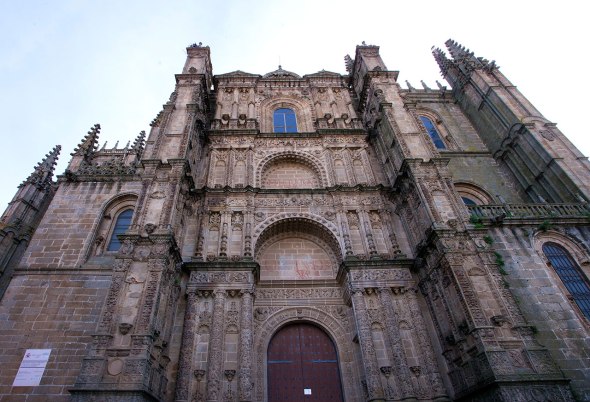
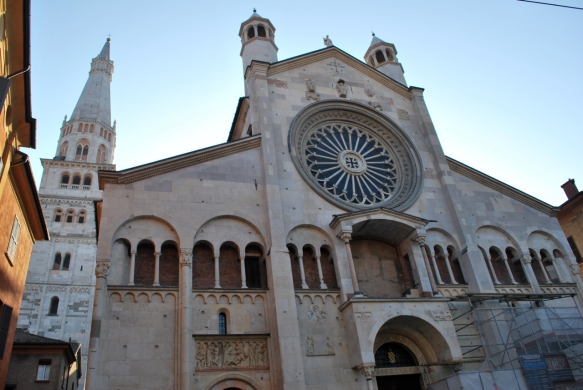
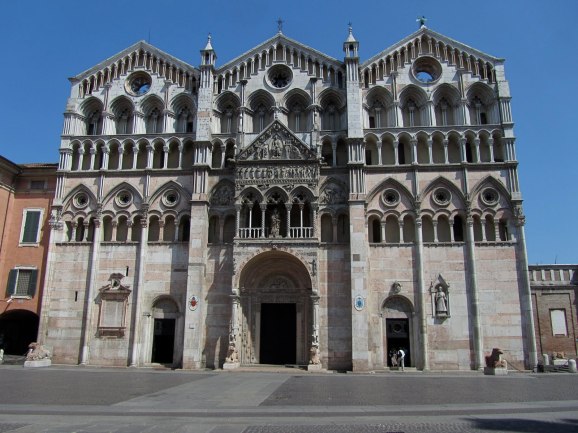
The two centuries of the Carolingian period (or pre-Romanesque) were the most tragic for Italy. But after the year 1000, emperors of Germanic origin called Ottonians prepared to pacify Italy. At this time the construction activity renewed and some private and municipal palaces were built. But in Italy, the capital work of art from the 11th century (if not for its beauty, at least for the influence it played on the art of other countries) was the reconstruction of the abbey of Montecassino between 1066 and 1071. In this abbey, the great crypt-church was preceded by a huge atrium, the hostelry and refectory were at one side of the monastic cloister, and at the other side was the large building that served as a dormitory.

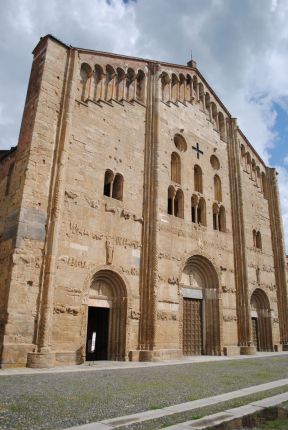
In Lombardy, the art of local Romanesque builders mixed with decorative forms coming from Germany. Thus, the cathedrals of Plasencia, Modena and Ferrara were influenced by German Romanesque art, with facades of several floors with galleries and historiated doors. These doors used to have porticoes resting on lions or other crouching figures. Inside these cathedrals, the space is purely in Lombard style contrary to their exterior in which it is clear the decorative sculpture on the facades, which strives to fill in the blanks of the walls.
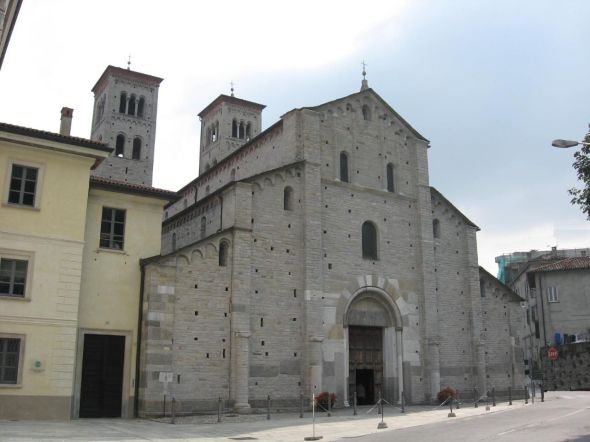



St. Ambrose of Milan, where Lombard kings and German emperors were crowned, is a church of great interest but whose construction date is uncertain. Today it is generally accepted that its current structure should have been built towards 1080 and its vaults had to be closed by 1196. Its large atrium and tall towers, with the typical Lombard bands were built with bricks, and only the sculptural details were carved in stone. An only-stone version of St. Ambrose is San Miguel de Pavia built between 1100 and 1160, a huge building whose facade is horizontally crossed by low-relief friezes only interrupted by its three gates.
Among the purest examples of Lombard Romanesque in Italy are San Abbondio of Como begun in 1063 with a simple basilica-type facade, and the church of the monastery of Pomposa, in the Emilia, particularly famous for its bell tower also built in 1063 by the abbot Guido of Ravenna. This is a nine-story high tower, with each floor marked at the outside by a corresponding Lombard band and provided with openings whose size grows rhythmically from a simple loophole at the base to four large arcades on the top floor.
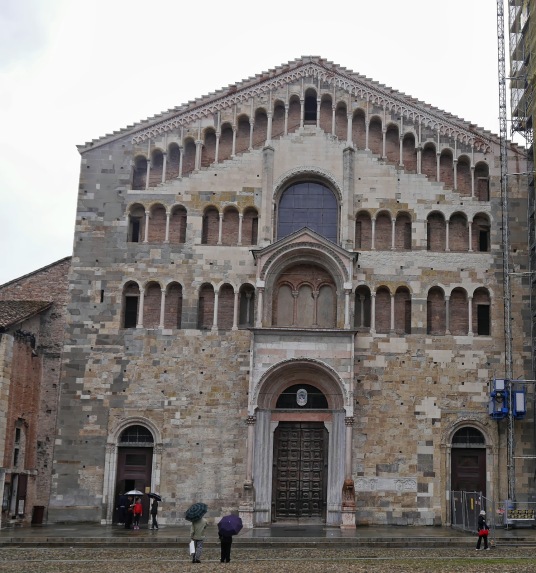
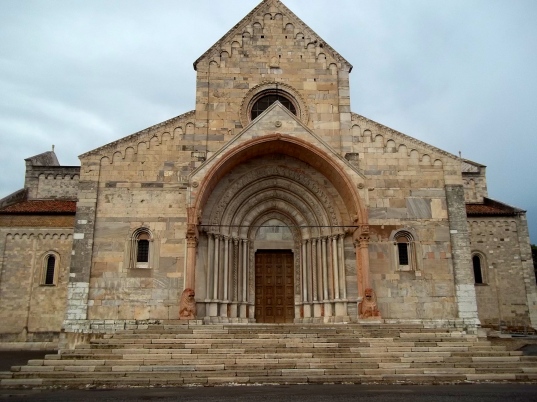
But most art historians agree that the richest and more sumptuous of the Lombard Romanesque churches are those of San Zeno of Verona —famous for the lavishly decorated marble panels at each side of its door— and the cathedral of Parma, whose impressive 12th century facade balances the elements of the two horizontal sections of its arcade galleries with the vertical area formed by the overlapping of the door, its tribune, and a large oculus.
The superposition of triforia* and high galleries, characteristic of Lombard builders mixed with the typical classical tradition peculiar from each region of Italy, came together later to help shape the definitive Italian Romanesque style.
Another example is the cathedral of Ancona on the Adriatic. Its exterior is completely Lombard: the facades are topped with Lombard bands and the walls are divided by vertical bands like classical pilasters. Its ceiling is covered with painted wood forming vaults in the style used in other constructions of Germanic countries.
However, the definitive proof that in Italy eventually won the classical national style over the influence of Lombard and Germanic elements, is the baptistery of Florence, a building that can be described as Florentine Romanesque and probably built before the year 1000. This monument lacks both Lombard bands and the vertical outer bands typically used in Lombard architecture which we saw were frequently implemented in other Italian buildings of the time. As we will discuss in future essays, despite the fact that the Florentine Romanesque wasn’t widely used across Italy as it was the Pisan Romanesque or even Lombard styles, at last the influence of the Florentine Romanesque would be crucial for the subsequent development of Renaissance architecture.
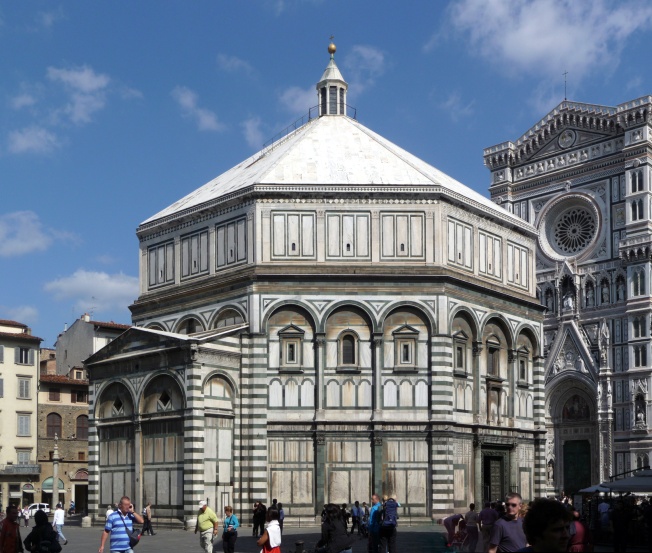
___________________________
 *Triforia: A Triforium (plural Triforia) is a shallow arched gallery within the thickness of an inner wall, usually located above the nave of a church. It may be also placed at the level of the clerestory windows, or it in a separate level below the clerestory. Triforia should not be confused with tribunes because they actually involve an open space and not a “blind” or close one as a Triforium which lacks any openings.
*Triforia: A Triforium (plural Triforia) is a shallow arched gallery within the thickness of an inner wall, usually located above the nave of a church. It may be also placed at the level of the clerestory windows, or it in a separate level below the clerestory. Triforia should not be confused with tribunes because they actually involve an open space and not a “blind” or close one as a Triforium which lacks any openings.

9 thoughts on “Introduction to Italian Romanesque Art: The Influence of the Lombard Romanesque Style”